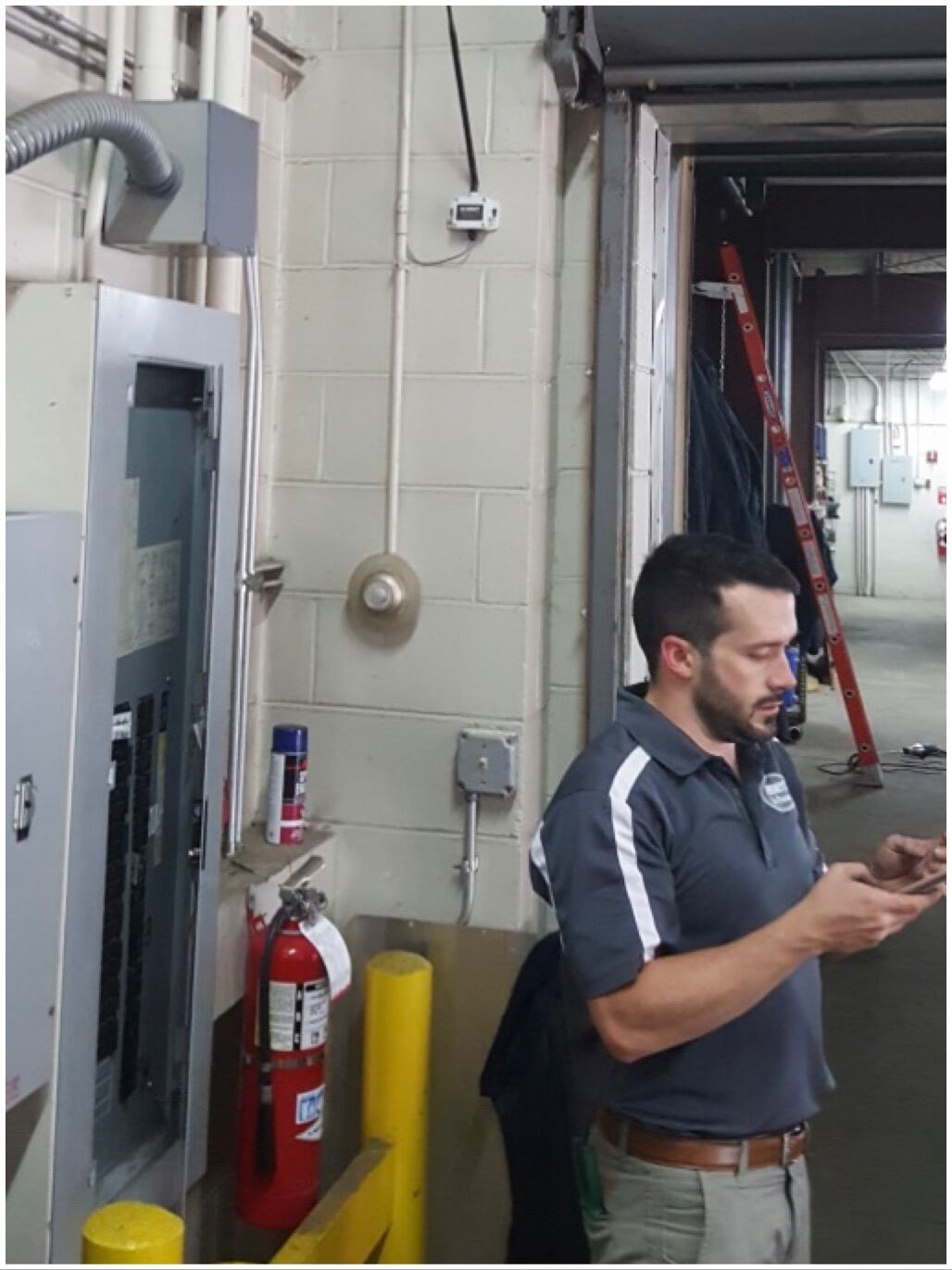The company helps ensure food is safe and companies are in compliance with its wireless sensors.
Sensors are placed on or around the "thing" to be monitored, notifications are set-up for when certain conditions are detected and real-time alerts can be sent by text, email or phone.
Food and transportation companies can place temperature and humidity monitors in refrigerated transportation compartments to monitor temperature levels throughout the trip.
Customer examples
Brad Walters, Monnit CEO, said the firm was his 11th start-up with the last one – Maxstream, a wireless tech company – being sold to Digi International in 2006.

Walters said he asked old clients what the last product didn’t do and feedback was it didn’t have the information at the other end such as providing temperature and humidity readings.
“With the IoT, there are millions of different things we interact with, of which the state could be damaged and we have a concern and want to know about that,” he told FoodQualityNews.
“The first vertical market for wireless sensors was cold chain management, we think of it from farm to fork, the value proposition was they need it due to a cooler going down and perishables in too warm a temperature.”
Walters said in mid-2010 they put sensors in a cooling unit that stored whipped cream.
The customer was initially sceptical but a few days after installation they got a text message saying the cooler was warming up. After driving across to look at and fix the problem, they called Monnit to say thanks as there was $300,000 worth of cooled whipped cream stopped from being wasted, he added.
Another customer, Hershey Creamery Company, is in the process installing wireless sensors in multiple locations.
Hershey's Ice Cream, no relation to The Hershey Company, used tactographical charting (pen scribes mark on a round chart) to record freezer temperatures.
This process had a three to four day delay in the manual reporting process of mailing charts to headquarters and there was no alert system to warn them if there was an issue with a freezer.
In testing, they found existing charts were inaccurately tracking temperatures while Monnit was accurate to within one degree.
The firm has saved about $10,000 worth of ice cream after a refrigerated storage truck went down and the system was able to alert headquarters and get them fixed before temperatures got too hot.
Bob Hoffman, of Hershey's Ice Cream, told us that they were having problems determining temperature in cold storage warehouses.
“The system we used before kept breaking down and we were having trouble finding replacement parts. The Monnit product does what we need it to do and we have access from various sites," he said.
“The [Maryland and Pennsylvania] health department[s] want a display on the outside of the freezer to tell people at the branch what the temperature is and it has to be a visual alert. In the summertime there can be deviations, we try and keep warehouses at 20 degrees below zero but the temperature inside when the door opens can rise and the defrost cycles on refrigeration units means there can be variations every day but it doesn’t affect the ice cream.
“In the next six months we will have sensors at all 28 locations we have about 18 more locations to go at the moment.”
How it works
Monnit wireless sensors come ready to connect to the MonnitLink Wireless Gateway.
Once the gateway establishes a connection with the iMonnit online wireless sensor monitoring system and communicates with the Monnit servers, insert the batteries into each sensor.
The sensor will power up and connect to the wireless gateway and communicate with iMonnit, assigning each sensor its own unique id number.
Sensors can be 200-300ft away from the receiver and can check for change and report at different time intervals or immediately if something is out of threshold.
Monnit also recently moved its headquarters to a larger and newly renovated office space at almost 30,000 square feet in Utah.
